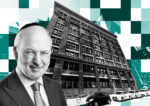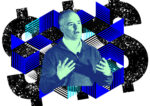Trending
Here are the neighborhoods where homebuyers make the biggest down payments
Leverage fell in large parts of the city: report
UPDATED, Dec. 21, 12:31 p.m.: In Manhattan, people buy luxury condominiums in cash. In the outer boroughs, people get big mortgages — like almost everyone else in America. That’s the stereotype, at least.
But over the past seven years the picture has started to change. Leverage ratios crept up in Manhattan between 2010 and 2017, according to a new report by listing website RentHop. And they fell across large swaths of Brooklyn, Queens and the Bronx.
In the West Concourse neighborhood, for example, the median buyer financed 72.73 percent of her purchase with a mortgage, down from 98.19 percent in 2010. In East New York, the median leverage ratio fell to 62.91 percent from 89.11 percent.
On the other end of the spectrum, the median mortgage-to-price ratio in the Upper East Side rose to 64.88 percent, from 52.28 percent. And in Washington Heights it rose to 75.28 percent, from 66.3 percent.
Across the city, the median leverage ratio fell by more than 5 percent in 69 neighborhoods, while rising by more than 5 percent in only 18. The city’s overall leverage ratio nonetheless stayed at 75 percent in recent years, dipping slightly to 74 percent in 2017.
“It seems the historically less affluent areas have made some gains in financial stability,” said RentHop’s Shane Leese. Lower leverage ratios are “an excellent sign for these areas, I would think.”
The may also be a symptom of gentrification. As prices rise in neighborhoods like Crown Heights and Bedford-Stuyvesant, their mortgage markets are starting to become a little more similar to Manhattan’s.
The single largest mortgage recorded was a $56 million loan that funded the $87.7 million acquisition of a penthouse at 432 Park Avenue.
Correction: an earlier version of this post got Shane Leese’s surname wrong.




